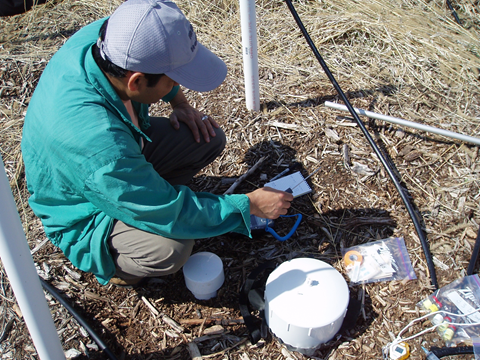Advancing constructed wetlands and carbon bioreactors to abate edge-of field nitrogen losses
Nitrogen balance in and export from agricultural fields associated with controlled drainage systems and denitrifying bioreactors
Situation: Intensive agriculture is a major source of increased nitrogen (N) concentrations in surface and ground waters due to nitrate-N loss from drainage tiles. Tile nitrate losses can be reduced by the use of managed or controlled drainage systems that limit tile flow, and also by the use of denitrifying bioreactors that enhance denitrification, the microbial conversion of nitrate-N to N gases.
Actions: The purpose of this study was to estimate N budgets and monitor tile flow in a farming system in east-central Illinois. The study site was a seed corn-soybean rotation with standard free drainage (FD) and controlled drainage (CD) tile systems. Wood chip bioreactors were also installed below the CD structures.
Take-home message: 
- Controlled drainage greatly reduced tile flow and tile nitrate-N export compared to the free drainage area.
- A bioreactor combined with the CD tile system also greatly reduced nitrate-N export. Both managed drainage and denitrifying bioreactors have a great potential for reducing tile nitrate-N export to streams through increased denitrification.
- Little N2O release was measured from the bioreactor, with most nitrate reduced to N2.
For more information:
- Krishna P. Woli, Mark B. David, Richard A. Cooke, Gregory F. Mclsaac, Corey A. Mitchell. 2010. Nitrogen balance in and export from agricultural fields associated with controlled drainage systems and denitrifying bioreactors. Ecological Engineering 36:1558-1566.
- Email Mark B. David at mbdavid@illinois.edu